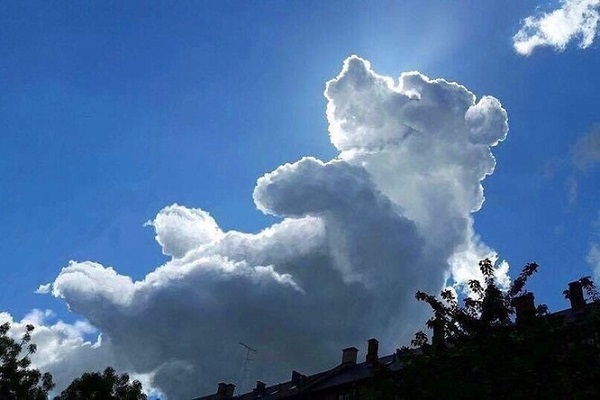Clouds are one of the most beautiful and mysterious phenomena of nature. These visible masses of water droplets or ice crystals suspended in the Earth’s atmosphere are a constant source of fascination for us. Their shapes and formations change constantly, creating an ever-shifting canvas in the sky. In this article, we will explore the science behind cloud formation and the different types of clouds that we observe.

Cloud Formation:
Clouds are formed when moist air rises and cools, causing the water vapor in the air to condense into tiny droplets or ice crystals. The air may be heated by the sun’s rays or by contact with a warm surface such as the ground. As the warm air rises, it expands and cools, which reduces its ability to hold moisture. This causes the water vapor to condense into visible cloud droplets.

The different types of clouds are classified based on their shape, size, and altitude. There are three main types of clouds – cirrus, stratus, and cumulus – and they can combine to form complex cloud structures.
Cirrus Clouds:
Cirrus clouds are thin, wispy clouds that form at high altitudes. They are made up of ice crystals and often have a feathery appearance. Cirrus clouds are usually an indicator of fair weather, but they can also signal the approach of a storm.

Stratus Clouds:
Stratus clouds are flat, featureless clouds that form at low altitudes. They can cover the entire sky and are often associated with overcast or rainy weather. Stratus clouds can also form near the ground as fog.

Cumulus Clouds:
Cumulus clouds are puffy, white clouds that look like cotton balls. They form at low to medium altitudes and are often associated with fair weather. However, cumulus clouds can also grow into towering cumulonimbus clouds, which can produce thunderstorms and other severe weather.

Clouds can also combine to form complex structures such as lenticular clouds, which form over mountains and resemble flying saucers, or mammatus clouds, which appear as pouches hanging from the underside of a cloud.
Conclusion:
The formation of clouds is a beautiful and complex process that is driven by the interaction of moisture, temperature, and air pressure. Understanding the science behind cloud formation can help us appreciate the beauty of nature and better predict weather patterns. So, the next time you look up at the sky, take a moment to appreciate the wonders of the ever-changing canvas above us.












